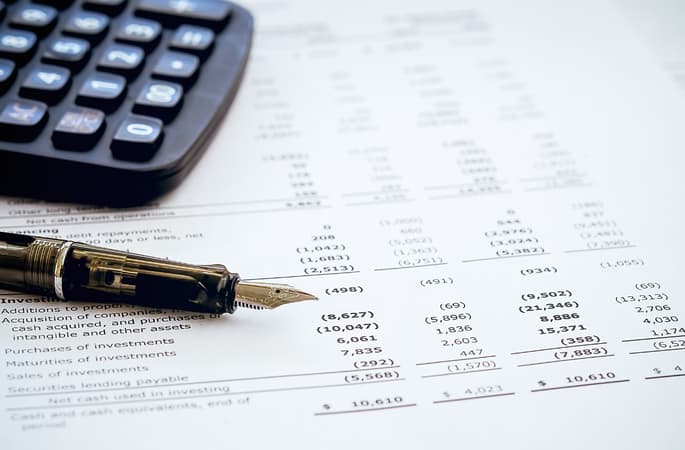Jump to a section
As a small business owner, you might find yourself overwhelmed by financial formulas and having to work out your financial performance. However, grasping the concept of gross and net profit is crucial for making well-informed business decisions regarding pricing and expenses. It might take a bit of time and trial and error to figure out your gross and net profits at first, but once you get the hang of it, you'll wonder how you ever managed without them!
Key takeaways
-
Gross profit focuses on revenue minus direct production costs.
-
Net profit considers all business expenses, showing the actual earnings after all deductions.
-
Net profit will always be lower than gross profit unless there are no additional expenses beyond production costs.

What is gross profit?
Gross profit is the difference between the selling price of your product or service and the cost of producing it. It shows how efficiently a company is producing and selling its goods or services.
For a service-based business, it's the job price minus the cost of the time spent doing the job. It's crucial to understand gross profit to ensure you're not selling at a loss.
What’s included in gross profit?
Gross profit includes revenue from sales and deducts the cost of goods sold (COGS)—the direct costs of producing your goods or services. This typically includes:
-
Raw materials
-
Manufacturing costs
-
Packaging
-
Direct labor costs (only if directly tied to production)
However, it does not include operating expenses such as rent, salaries (unless part of production), and administrative costs. If you have a recent profit and loss statement, it should show your total cost of goods sold. If not, you can figure it out using this formula: Cost of goods sold (COGS) = starting inventory + purchases – ending inventory
How to calculate gross profit
To find your gross profit, use this simple formula:
Gross Profit = Revenue - Cost of Goods Sold (COGS)
For example, if you sell a handmade candle for £11 and it costs £3 to produce, your gross profit per candle is: £11 (selling price) - £3 (COGS) = £8 (gross profit)
What is net profit?
Net profit, also known as the “bottom line”, is the final amount your business earns after deducting all operating expenses from your gross profit. It gives you a complete picture of your business’s financial health.
Understanding your net profit is crucial for assessing the overall financial viability of your business. This is because it reflects your business’ true profitability after considering all costs associated with both production and day-to-day operations.
What costs are included in net profit?
Net profit includes the same costs as the gross profit, plus all the other costs of running your business (commonly called operating expenses), including salaries, rent, software, and bank charges or credit card fees (if your business credit card charges these).
How to calculate net profit
To figure out your net profit, you’ll need to use your gross profit calculation:
Net profit = gross profit − operating expenses
For example, if your monthly operating expenses to make your handmade candles amount to £5 per candle, your net profit would be: £8 (gross profit) - £5 (operating expenses) = £3 (net profit)
What's the difference between gross profit and net profit
Gross profit is the money you make from selling your product after subtracting the direct costs of making or buying it. It's like looking at the earnings from your main business activity.
Net profit is the figure commonly referred to as profit. It takes a wider view; it considers not only the cost of making or buying the product (like in gross profit) but also all the other costs of running your business, such as rent, salaries, and utilities. Net profit gives you a more realistic picture of how much money your company is really making after considering all the expenses. It's like looking at the overall profit after everything is taken into account.
Importance of gross and net profit for small businesses
Gross profit helps you see how manufacturing and labour costs affect your finances before considering other expenses. It allows you to figure out how much money remains from your sales after covering things like raw materials and labour. This can help you spot issues like paying too much for materials or having too many workers. For instance, if most of your profit is going into raw materials, you might need to find a cheaper supplier.
On the flip side, net profit gives a broader view of your overall financial health. It includes all costs, not just production ones, giving insights into cash flow. Unlike gross profit, net profit is a key metric that can attract investors because it shows how profitable your company truly is.
Improving gross and net profit margins
Now you’ve calculated your gross and net profits, you can start looking at how to improve your profit margins:
How to improve gross profit?
- Cost reduction: Find ways to make your product more efficiently. Can you negotiate with suppliers for better material prices to lower costs?
- Pricing adjustments: Regularly check if your prices cover your production costs. If they don’t, you may need to increase your prices.
How to improve net profit?
- Expense management: Be smart about your spending. Can you reduce your utility bills by using energy efficient practices?
- Revenue optimisation: Look for ways to increase sales through marketing or new products.
The bottom line
Grasping the difference between gross profit (earnings after production costs) and net profit (earnings after all expenses) is essential for your business’ pricing, expense management, and overall financial health. Use gross profit to understand core earnings and net profit for a complete picture. Embrace these insights to make informed decisions, optimise costs, and ensure sustained profitability.
If you’re ready to enjoy enhanced cash flow, simplified expense tracking, the potential for rewards, and control over employee spending, apply for a Capital on Tap Business Credit Card in under 2 minutes today.
Frequently asked questions
Does gross profit include salaries?
It depends. If wages are directly tied to production (e.g., factory workers), they are included in the cost of goods sold (COGS). Generally, staff salaries fall under operating expenses.
Is net profit always less than gross profit?
Yes. Since net profit accounts for additional expenses beyond production, it is always lower than gross profit unless a business has no operating expenses.
Can a business earn a gross profit but incur a net loss?
Yes. If operating expenses exceed gross profit, the business will experience a net loss.
Does gross profit include VAT?
No. VAT is not included in gross profit calculations since it is a tax collected on behalf of the government.
This does not constitute financial advice. If you want to understand your profits in detail, contact your financial advisor or accountant.











